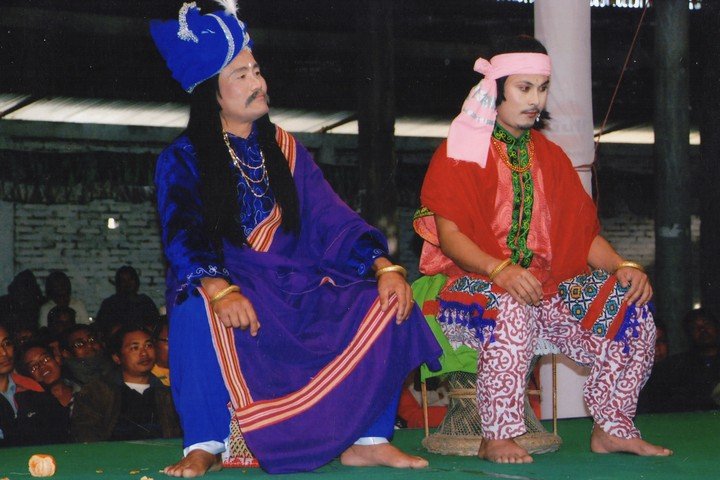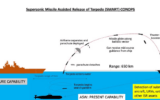
February 29 2024 Prelims Practice Questions (PPQs)
Subscribe to Never Miss an Important Update! Assured Discounts on New Products!
Must Join PMF IAS Telegram Channel & PMF IAS History Telegram Channel
- These Prelims Practice Questions (PPQs) are based on PMF IAS Daily Current Affairs.
- The daily current affairs are uploaded every day by 8 PM. You can read the Daily Current Affairs from here.
- Subscribers of the “Current Affairs” course can Download Daily Current Affairs in PDF/DOC from here.
[Quiz] Daily Prelims Practice Questions (PPQs) – February 29 2024
0 of 11 questions completed
Questions:
- 1
- 2
- 3
- 4
- 5
- 6
- 7
- 8
- 9
- 10
- 11
Information
These MCQs are based on PMF IAS Daily Current Affairs. The daily current affairs are uploaded every day by 8 PM. You can read the Daily Current Affairs from here. Subscribers of the “Current Affairs” course can Download Daily Current Affairs in PDF/DOC from here.
You have already completed the Test before. Hence you can not start it again.
Test is loading...
You must sign in or sign up to start the Test.
You have to finish following quiz, to start this Test:
Your results are here!! for" [Quiz] Daily Prelims Practice Questions (PPQs) – February 29 2024 "
0 of 11 questions answered correctly
Your time:
Time has elapsed
Your Final Score is : 0
You have attempted : 0
Number of Correct Questions : 0 and scored 0
Number of Incorrect Questions : 0 and Negative marks 0
| Average score |
|
| Your score |
|
-
Not categorized
You have attempted: 0
Number of Correct Questions: 0 and scored 0
Number of Incorrect Questions: 0 and Negative marks 0
| Pos. | Name | Entered on | Points | Result |
|---|---|---|---|---|
| Table is loading | ||||
| No data available | ||||
- 1
- 2
- 3
- 4
- 5
- 6
- 7
- 8
- 9
- 10
- 11
- Answered
- Review
-
Question 1 of 11
1. Question
Q1. {Prelims – Envi – Species} Agasthyagama edge, recently seen in the news, belongs to which one of the following species?
Correct
Explanation
- Scientists recently discovered a new kangaroo lizard species, Agasthyagama edge, in the Western Ghats.
- Named after the EDGE program, it’s the second in the Agasthyagama genus.
- Found in Kulamavu, Idukki, it belongs to the Agamidae family.
- These terrestrial reptiles, lacking a fifth toe for climbing, prefer leaf-covered areas.
- Averaging 4.3 cm in length, they are fast runners feeding on small insects, and they hide within dry leaves to avoid predators.
- The species is significant for its distinctiveness and global endangerment.

Answer: (b) Kangaroo Lizard; Difficulty Level: Medium
Incorrect
Explanation
- Scientists recently discovered a new kangaroo lizard species, Agasthyagama edge, in the Western Ghats.
- Named after the EDGE program, it’s the second in the Agasthyagama genus.
- Found in Kulamavu, Idukki, it belongs to the Agamidae family.
- These terrestrial reptiles, lacking a fifth toe for climbing, prefer leaf-covered areas.
- Averaging 4.3 cm in length, they are fast runners feeding on small insects, and they hide within dry leaves to avoid predators.
- The species is significant for its distinctiveness and global endangerment.

Answer: (b) Kangaroo Lizard; Difficulty Level: Medium
Unattempted
Explanation
- Scientists recently discovered a new kangaroo lizard species, Agasthyagama edge, in the Western Ghats.
- Named after the EDGE program, it’s the second in the Agasthyagama genus.
- Found in Kulamavu, Idukki, it belongs to the Agamidae family.
- These terrestrial reptiles, lacking a fifth toe for climbing, prefer leaf-covered areas.
- Averaging 4.3 cm in length, they are fast runners feeding on small insects, and they hide within dry leaves to avoid predators.
- The species is significant for its distinctiveness and global endangerment.

Answer: (b) Kangaroo Lizard; Difficulty Level: Medium
-
Question 2 of 11
2. Question
Q2. {A&C – Culture} Shumang Leela, recently seen in the news, is a traditional form of theatre performed in which state?
Correct
Explanation
- Shumang Leela, a traditional Manipuri theatre form, faces challenges due to ethnic violence, impacting its artists and jeopardizing the state’s cultural richness.
- Originating as a comic genre for royalty, it has evolved into a powerful medium for mass education and entertainment.
- In this unique theatre, male actors portray female roles (Nupi Shabis), and transgender actors take on female characters.
- The plays aim to educate the public on social, political, and economic issues, with two types,
- Nupa Shumang Leela (performed only by men) and
- Nupi Shumang Leela (performed only by women).

Answer: (d) Manipur; Difficulty Level: Medium
Incorrect
Explanation
- Shumang Leela, a traditional Manipuri theatre form, faces challenges due to ethnic violence, impacting its artists and jeopardizing the state’s cultural richness.
- Originating as a comic genre for royalty, it has evolved into a powerful medium for mass education and entertainment.
- In this unique theatre, male actors portray female roles (Nupi Shabis), and transgender actors take on female characters.
- The plays aim to educate the public on social, political, and economic issues, with two types,
- Nupa Shumang Leela (performed only by men) and
- Nupi Shumang Leela (performed only by women).

Answer: (d) Manipur; Difficulty Level: Medium
Unattempted
Explanation
- Shumang Leela, a traditional Manipuri theatre form, faces challenges due to ethnic violence, impacting its artists and jeopardizing the state’s cultural richness.
- Originating as a comic genre for royalty, it has evolved into a powerful medium for mass education and entertainment.
- In this unique theatre, male actors portray female roles (Nupi Shabis), and transgender actors take on female characters.
- The plays aim to educate the public on social, political, and economic issues, with two types,
- Nupa Shumang Leela (performed only by men) and
- Nupi Shumang Leela (performed only by women).

Answer: (d) Manipur; Difficulty Level: Medium
-
Question 3 of 11
3. Question
Q3. {MIH – Personalities} Rani Chennamma, recently seen in the news, is related to which one of the following events?
Correct
Explanation
- Social groups nationwide recently organized the Naanoo Rani Chennamma campaign, marking 200 years since Rani Chennamma’s rebellion against the British East India Company.
- The campaign, which is set to begin from Kittur, the site of Chennamma’s resistance, calls on women to rise against patriarchal, anti-democratic and casteist forces in the country.
- Born in Kakati, Karnataka, she became Kitturu’s queen after marrying Raja Mallasarja.
- Post his death, the British refused to recognize King’s eldest son Shivalingappa as the successor, leading to the Kittur Rebellion.
- British forces under John Thackery initially suffered losses, but eventually captured Kittur Fort in 1824.
- Rani Chennamma and family were imprisoned; she passed away in 1829 at the Bailhongal fort.
- The reason that Rani Chenamma came into our national consciousness after other women warriors like Rani Laxmi Bai was because Karnataka became a state much later.
Answer: (c) Kittur Rebellion; Difficulty Level: Medium
Incorrect
Explanation
- Social groups nationwide recently organized the Naanoo Rani Chennamma campaign, marking 200 years since Rani Chennamma’s rebellion against the British East India Company.
- The campaign, which is set to begin from Kittur, the site of Chennamma’s resistance, calls on women to rise against patriarchal, anti-democratic and casteist forces in the country.
- Born in Kakati, Karnataka, she became Kitturu’s queen after marrying Raja Mallasarja.
- Post his death, the British refused to recognize King’s eldest son Shivalingappa as the successor, leading to the Kittur Rebellion.
- British forces under John Thackery initially suffered losses, but eventually captured Kittur Fort in 1824.
- Rani Chennamma and family were imprisoned; she passed away in 1829 at the Bailhongal fort.
- The reason that Rani Chenamma came into our national consciousness after other women warriors like Rani Laxmi Bai was because Karnataka became a state much later.
Answer: (c) Kittur Rebellion; Difficulty Level: Medium
Unattempted
Explanation
- Social groups nationwide recently organized the Naanoo Rani Chennamma campaign, marking 200 years since Rani Chennamma’s rebellion against the British East India Company.
- The campaign, which is set to begin from Kittur, the site of Chennamma’s resistance, calls on women to rise against patriarchal, anti-democratic and casteist forces in the country.
- Born in Kakati, Karnataka, she became Kitturu’s queen after marrying Raja Mallasarja.
- Post his death, the British refused to recognize King’s eldest son Shivalingappa as the successor, leading to the Kittur Rebellion.
- British forces under John Thackery initially suffered losses, but eventually captured Kittur Fort in 1824.
- Rani Chennamma and family were imprisoned; she passed away in 1829 at the Bailhongal fort.
- The reason that Rani Chenamma came into our national consciousness after other women warriors like Rani Laxmi Bai was because Karnataka became a state much later.
Answer: (c) Kittur Rebellion; Difficulty Level: Medium
-
Question 4 of 11
4. Question
Q4. {IE – Taxation} Consider the following statements with respect to Fiscal Federalism in India:
- The Union government has been consistently sharing an increasing share of its proceeds from the gross tax revenue with the States as mandated by successive Finance Commissions (FCs).
- The introduction of the Goods and Services Tax (GST) in 2017 led to a reduction in the number of cesses and surcharges imposed by the Union government.
- The net divisible pool consists of the gross tax revenue after deducting cesses, surcharges, and the cost of tax collection.
How many of the above statement(s) is/are correct?
Correct
Explanation
Statement 1 is incorrect
- The Union government has sought to keep an increasing share of its proceeds out of the divisible pool by excluding certain cesses and surcharges from the net proceeds, contrary to the recommendations of successive FCs.
- Despite constitutional provisions mandating the sharing of net proceeds with States, the Union government has not fully adhered to the FC-recommended shares, leading to complaints of increasing vertical inequalities in devolution.
Statement 2 is incorrect
- The introduction of the GST did not lead to a reduction in the number of cesses and surcharges imposed by the Union government. Instead, new cesses and surcharges continued to be introduced, and many old ones remained outside the GST system
- The imposition of new cesses and surcharges, along with the exclusion of certain proceeds from the net divisible pool, has resulted in a decline in the share of devolution to States.
- Instances of non-transfer or short transfer of collected cesses and surcharges to the respective funds indicate a lack of transparency and adherence to established procedures in fund allocation.
Statement 3 is correct
- The divisible pool refers to the portion of the gross tax revenue from which a share is vertically devolved by the Union to all States as per FC recommendations for a five year period.
- The net divisible pool is the portion of the gross tax revenue that is available for vertical devolution to the States after certain deductions such as cesses, surcharges, cost of tax collections.
- Earlier, all corporation taxes and customs duties were fully absorbed by the Union, and only income taxes and excise duties were shared with the States.
- In a constitutional amendment in 2000, all taxes of the Union were added to the net proceeds.
- But cesses and surcharges under Article 270 and Article 271 were kept out of the net proceeds.
Answer: (a) Only one; Difficulty Level: Medium
Incorrect
Explanation
Statement 1 is incorrect
- The Union government has sought to keep an increasing share of its proceeds out of the divisible pool by excluding certain cesses and surcharges from the net proceeds, contrary to the recommendations of successive FCs.
- Despite constitutional provisions mandating the sharing of net proceeds with States, the Union government has not fully adhered to the FC-recommended shares, leading to complaints of increasing vertical inequalities in devolution.
Statement 2 is incorrect
- The introduction of the GST did not lead to a reduction in the number of cesses and surcharges imposed by the Union government. Instead, new cesses and surcharges continued to be introduced, and many old ones remained outside the GST system
- The imposition of new cesses and surcharges, along with the exclusion of certain proceeds from the net divisible pool, has resulted in a decline in the share of devolution to States.
- Instances of non-transfer or short transfer of collected cesses and surcharges to the respective funds indicate a lack of transparency and adherence to established procedures in fund allocation.
Statement 3 is correct
- The divisible pool refers to the portion of the gross tax revenue from which a share is vertically devolved by the Union to all States as per FC recommendations for a five year period.
- The net divisible pool is the portion of the gross tax revenue that is available for vertical devolution to the States after certain deductions such as cesses, surcharges, cost of tax collections.
- Earlier, all corporation taxes and customs duties were fully absorbed by the Union, and only income taxes and excise duties were shared with the States.
- In a constitutional amendment in 2000, all taxes of the Union were added to the net proceeds.
- But cesses and surcharges under Article 270 and Article 271 were kept out of the net proceeds.
Answer: (a) Only one; Difficulty Level: Medium
Unattempted
Explanation
Statement 1 is incorrect
- The Union government has sought to keep an increasing share of its proceeds out of the divisible pool by excluding certain cesses and surcharges from the net proceeds, contrary to the recommendations of successive FCs.
- Despite constitutional provisions mandating the sharing of net proceeds with States, the Union government has not fully adhered to the FC-recommended shares, leading to complaints of increasing vertical inequalities in devolution.
Statement 2 is incorrect
- The introduction of the GST did not lead to a reduction in the number of cesses and surcharges imposed by the Union government. Instead, new cesses and surcharges continued to be introduced, and many old ones remained outside the GST system
- The imposition of new cesses and surcharges, along with the exclusion of certain proceeds from the net divisible pool, has resulted in a decline in the share of devolution to States.
- Instances of non-transfer or short transfer of collected cesses and surcharges to the respective funds indicate a lack of transparency and adherence to established procedures in fund allocation.
Statement 3 is correct
- The divisible pool refers to the portion of the gross tax revenue from which a share is vertically devolved by the Union to all States as per FC recommendations for a five year period.
- The net divisible pool is the portion of the gross tax revenue that is available for vertical devolution to the States after certain deductions such as cesses, surcharges, cost of tax collections.
- Earlier, all corporation taxes and customs duties were fully absorbed by the Union, and only income taxes and excise duties were shared with the States.
- In a constitutional amendment in 2000, all taxes of the Union were added to the net proceeds.
- But cesses and surcharges under Article 270 and Article 271 were kept out of the net proceeds.
Answer: (a) Only one; Difficulty Level: Medium
-
Question 5 of 11
5. Question
Q5. {IR – Institutions} Consider the following statements regarding Trade-Related Investment Measures (TRIMS):
- TRIMS are regulations and policies imposed by governments that directly or indirectly affect foreign investment.
- The enforcement of TRIMS falls under the jurisdiction of the World Trade Organization (WTO).
Which of the above statement(s) is/are correct?
Correct
Explanation
Statement 1 is correct
- TRIMS encompass a wide range of regulations and policies imposed by governments that can impact foreign investment, including measures like local content requirements or trade balancing regulations.
- TRIMS are aimed at promoting fair competition and preventing discriminatory practices in international trade and investment.
- Examples of TRIMS include requirements for a certain percentage of goods to be produced domestically or restrictions on the repatriation of profits by foreign investors.
Statement 2 is correct
- The enforcement and regulation of TRIMS fall under the purview of the World Trade Organization (WTO), specifically outlined in the Agreement on Trade-Related Investment Measures (TRIMS Agreement).
- The TRIMS Agreement, part of the WTO framework, seeks to ensure that measures affecting trade-related investment do not discriminate against foreign investors or impedes trade unnecessarily.
- The TRIMS Agreement prohibits WTO member countries from enforcing certain types of TRIMS that are deemed inconsistent with the principles of the agreement.
Answer: (c) Both 1 and 2; Difficulty Level: Medium
Incorrect
Explanation
Statement 1 is correct
- TRIMS encompass a wide range of regulations and policies imposed by governments that can impact foreign investment, including measures like local content requirements or trade balancing regulations.
- TRIMS are aimed at promoting fair competition and preventing discriminatory practices in international trade and investment.
- Examples of TRIMS include requirements for a certain percentage of goods to be produced domestically or restrictions on the repatriation of profits by foreign investors.
Statement 2 is correct
- The enforcement and regulation of TRIMS fall under the purview of the World Trade Organization (WTO), specifically outlined in the Agreement on Trade-Related Investment Measures (TRIMS Agreement).
- The TRIMS Agreement, part of the WTO framework, seeks to ensure that measures affecting trade-related investment do not discriminate against foreign investors or impedes trade unnecessarily.
- The TRIMS Agreement prohibits WTO member countries from enforcing certain types of TRIMS that are deemed inconsistent with the principles of the agreement.
Answer: (c) Both 1 and 2; Difficulty Level: Medium
Unattempted
Explanation
Statement 1 is correct
- TRIMS encompass a wide range of regulations and policies imposed by governments that can impact foreign investment, including measures like local content requirements or trade balancing regulations.
- TRIMS are aimed at promoting fair competition and preventing discriminatory practices in international trade and investment.
- Examples of TRIMS include requirements for a certain percentage of goods to be produced domestically or restrictions on the repatriation of profits by foreign investors.
Statement 2 is correct
- The enforcement and regulation of TRIMS fall under the purview of the World Trade Organization (WTO), specifically outlined in the Agreement on Trade-Related Investment Measures (TRIMS Agreement).
- The TRIMS Agreement, part of the WTO framework, seeks to ensure that measures affecting trade-related investment do not discriminate against foreign investors or impedes trade unnecessarily.
- The TRIMS Agreement prohibits WTO member countries from enforcing certain types of TRIMS that are deemed inconsistent with the principles of the agreement.
Answer: (c) Both 1 and 2; Difficulty Level: Medium
-
Question 6 of 11
6. Question
Q6. {Prelims – IR – India-Nepal} Consider the following statements with respect to Pancheswar Multipurpose project:
- It is a multipurpose project being constructed on the Nepal side of Mahakali River.
- India will be providing Financial as well as Tactical assistance to Nepal under the Integrated Mahakali treaty.
Which of the above statement(s) is/are correct?
Correct
Explanation
Statement 1 is incorrect
- Pancheshwar Multipurpose Project is a multipurpose project being constructed on each side of the Mahakali river spanning both India and Nepal.
- It is designed as a multipurpose project aimed at harnessing the water resources of the Mahakali River for irrigation, hydropower generation, and flood control.
- Once completed, the project is expected to enhance regional cooperation, promote economic development, and provide significant benefits in terms of irrigation water supply and electricity generation for both India and Nepal.
Statement 2 is incorrect
- The project falls under the framework of the Integrated Mahakali River Development Treaty signed between India and Nepal in 1996.
- This treaty governs the development and management of the Mahakali River basin for the mutual benefit of both countries.
- The project has faced various challenges, including issues related to funding, environmental concerns, and resettlement of affected communities.
Answer: (d) Neither 1 nor 2; Difficulty Level: Medium
Incorrect
Explanation
Statement 1 is incorrect
- Pancheshwar Multipurpose Project is a multipurpose project being constructed on each side of the Mahakali river spanning both India and Nepal.
- It is designed as a multipurpose project aimed at harnessing the water resources of the Mahakali River for irrigation, hydropower generation, and flood control.
- Once completed, the project is expected to enhance regional cooperation, promote economic development, and provide significant benefits in terms of irrigation water supply and electricity generation for both India and Nepal.
Statement 2 is incorrect
- The project falls under the framework of the Integrated Mahakali River Development Treaty signed between India and Nepal in 1996.
- This treaty governs the development and management of the Mahakali River basin for the mutual benefit of both countries.
- The project has faced various challenges, including issues related to funding, environmental concerns, and resettlement of affected communities.
Answer: (d) Neither 1 nor 2; Difficulty Level: Medium
Unattempted
Explanation
Statement 1 is incorrect
- Pancheshwar Multipurpose Project is a multipurpose project being constructed on each side of the Mahakali river spanning both India and Nepal.
- It is designed as a multipurpose project aimed at harnessing the water resources of the Mahakali River for irrigation, hydropower generation, and flood control.
- Once completed, the project is expected to enhance regional cooperation, promote economic development, and provide significant benefits in terms of irrigation water supply and electricity generation for both India and Nepal.
Statement 2 is incorrect
- The project falls under the framework of the Integrated Mahakali River Development Treaty signed between India and Nepal in 1996.
- This treaty governs the development and management of the Mahakali River basin for the mutual benefit of both countries.
- The project has faced various challenges, including issues related to funding, environmental concerns, and resettlement of affected communities.
Answer: (d) Neither 1 nor 2; Difficulty Level: Medium
-
Question 7 of 11
7. Question
Q7. {Prelims – Envi – Species} Consider the following passage:
- They have no teeth and have bristles inside their mouth. The whales of the northern hemisphere are usually slightly smaller than their counterparts in the southern hemisphere. They are found in oceans worldwide, from the Arctic to the Antarctic. They use vocalizations to mediate their complex social and reproductive behaviours.
Based on the above passage which species of Cetaceans is being talked about?
Correct
Explanation
- Baleen whales, also known as mysticetes or whalebone whales, are a group of 14 species of carnivorous marine mammals.
- Baleen whales are so named because they have bristles (baleens) inside their mouth in which their prey gets stuck.
- There are 14 species of baleen whale including the blue, bowhead, right, humpback, minke and gray whale.
- Unlike toothed whales, the baleen whales have no teeth. Instead, these gentle giants utilize plates of baleen in their mouths to trap and consume their tiny prey.
- Size: They vary in size depending on the species. They can range from 30 feet (9 meters) to over 100 feet (30 meters) in length, with the blue whale being the largest known animal on Earth.
- Baleen whales of the northern hemisphere are usually slightly smaller than their counterparts in the southern hemisphere.
- Range: Baleen whales are found in oceans worldwide, from the Arctic to the Antarctic.
- They use vocalizations to mediate their complex social and reproductive behaviours in vast, opaque marine environment.

Answer: (d) Whalebone Whale; Difficulty Level: Medium
Incorrect
Explanation
- Baleen whales, also known as mysticetes or whalebone whales, are a group of 14 species of carnivorous marine mammals.
- Baleen whales are so named because they have bristles (baleens) inside their mouth in which their prey gets stuck.
- There are 14 species of baleen whale including the blue, bowhead, right, humpback, minke and gray whale.
- Unlike toothed whales, the baleen whales have no teeth. Instead, these gentle giants utilize plates of baleen in their mouths to trap and consume their tiny prey.
- Size: They vary in size depending on the species. They can range from 30 feet (9 meters) to over 100 feet (30 meters) in length, with the blue whale being the largest known animal on Earth.
- Baleen whales of the northern hemisphere are usually slightly smaller than their counterparts in the southern hemisphere.
- Range: Baleen whales are found in oceans worldwide, from the Arctic to the Antarctic.
- They use vocalizations to mediate their complex social and reproductive behaviours in vast, opaque marine environment.

Answer: (d) Whalebone Whale; Difficulty Level: Medium
Unattempted
Explanation
- Baleen whales, also known as mysticetes or whalebone whales, are a group of 14 species of carnivorous marine mammals.
- Baleen whales are so named because they have bristles (baleens) inside their mouth in which their prey gets stuck.
- There are 14 species of baleen whale including the blue, bowhead, right, humpback, minke and gray whale.
- Unlike toothed whales, the baleen whales have no teeth. Instead, these gentle giants utilize plates of baleen in their mouths to trap and consume their tiny prey.
- Size: They vary in size depending on the species. They can range from 30 feet (9 meters) to over 100 feet (30 meters) in length, with the blue whale being the largest known animal on Earth.
- Baleen whales of the northern hemisphere are usually slightly smaller than their counterparts in the southern hemisphere.
- Range: Baleen whales are found in oceans worldwide, from the Arctic to the Antarctic.
- They use vocalizations to mediate their complex social and reproductive behaviours in vast, opaque marine environment.

Answer: (d) Whalebone Whale; Difficulty Level: Medium
-
Question 8 of 11
8. Question
Q8. {IE – Financial Instruments} Consider the following statements about Additional Tier-1 (AT-1) Bonds:
- AT-1 bonds are perpetual bonds with no maturity date but the interest continues forever.
- Investors cannot return their bonds to the bank as there is no put option against these bonds.
Which of the above statement(s) is/are correct?
Correct
Explanation
Statement 1 is correct
- AT-1 bonds are perpetual bonds with no maturity date.
- Investors in these bonds do not get their principal back.
- However, the interest continues forever.
- AT-1 bonds have a higher interest rate than other bonds.
- Due to the perpetual nature of AT-1 bonds, these are often treated and viewed as equity, not debt.
Statement 2 is correct
- These bonds provide high returns but also carry greater risk.
- If the banking institution fails, these bonds are at risk.
- Investors cannot return their bonds to the bank as there is no put option against these bonds.
- However, these bonds are listed on the stock exchanges, so the investor can liquidate these whenever in need.
- In case of default, these bonds rank lower than the other debt, which is why these are subordinate debts.
Answer: (c) Both 1 and 2; Difficulty Level: Medium
Incorrect
Explanation
Statement 1 is correct
- AT-1 bonds are perpetual bonds with no maturity date.
- Investors in these bonds do not get their principal back.
- However, the interest continues forever.
- AT-1 bonds have a higher interest rate than other bonds.
- Due to the perpetual nature of AT-1 bonds, these are often treated and viewed as equity, not debt.
Statement 2 is correct
- These bonds provide high returns but also carry greater risk.
- If the banking institution fails, these bonds are at risk.
- Investors cannot return their bonds to the bank as there is no put option against these bonds.
- However, these bonds are listed on the stock exchanges, so the investor can liquidate these whenever in need.
- In case of default, these bonds rank lower than the other debt, which is why these are subordinate debts.
Answer: (c) Both 1 and 2; Difficulty Level: Medium
Unattempted
Explanation
Statement 1 is correct
- AT-1 bonds are perpetual bonds with no maturity date.
- Investors in these bonds do not get their principal back.
- However, the interest continues forever.
- AT-1 bonds have a higher interest rate than other bonds.
- Due to the perpetual nature of AT-1 bonds, these are often treated and viewed as equity, not debt.
Statement 2 is correct
- These bonds provide high returns but also carry greater risk.
- If the banking institution fails, these bonds are at risk.
- Investors cannot return their bonds to the bank as there is no put option against these bonds.
- However, these bonds are listed on the stock exchanges, so the investor can liquidate these whenever in need.
- In case of default, these bonds rank lower than the other debt, which is why these are subordinate debts.
Answer: (c) Both 1 and 2; Difficulty Level: Medium
-
Question 9 of 11
9. Question
Q9. {Polity – Constitutional Bodies} Consider the following statements with respect to Election Symbol:
- Under the Representation of Peoples Act (RPA), 1951, Election commission is responsible for allocation of symbols to political parties.
- No political party can use any public fund for carrying out activities that advertise party or symbol allotted to it.
How many of the above statement(s) is/are correct?
Correct
Explanation
Statement 1 is incorrect
- The Election Commission of India (ECI) is responsible for the allotment of symbols.
- Allotment of symbols to political parties is regulated under The Election Symbols (Reservation and Allotment) Order, 1968.
- The Election Symbols Order, 1968 mandates the ECI to provide for “specification, reservation, choice and allotment of symbols at parliamentary and assembly elections, for the recognition of political parties.
Statement 2 is correct
- Recently the ECI have directed to political parties to stop using public funds, resources, or places to promote themselves or their election symbols.
- This applies to anytime even before announcement of model code of conduct by the election commission of India.
Answer: (b) 2 Only; Difficulty Level: Medium
Incorrect
Explanation
Statement 1 is incorrect
- The Election Commission of India (ECI) is responsible for the allotment of symbols.
- Allotment of symbols to political parties is regulated under The Election Symbols (Reservation and Allotment) Order, 1968.
- The Election Symbols Order, 1968 mandates the ECI to provide for “specification, reservation, choice and allotment of symbols at parliamentary and assembly elections, for the recognition of political parties.
Statement 2 is correct
- Recently the ECI have directed to political parties to stop using public funds, resources, or places to promote themselves or their election symbols.
- This applies to anytime even before announcement of model code of conduct by the election commission of India.
Answer: (b) 2 Only; Difficulty Level: Medium
Unattempted
Explanation
Statement 1 is incorrect
- The Election Commission of India (ECI) is responsible for the allotment of symbols.
- Allotment of symbols to political parties is regulated under The Election Symbols (Reservation and Allotment) Order, 1968.
- The Election Symbols Order, 1968 mandates the ECI to provide for “specification, reservation, choice and allotment of symbols at parliamentary and assembly elections, for the recognition of political parties.
Statement 2 is correct
- Recently the ECI have directed to political parties to stop using public funds, resources, or places to promote themselves or their election symbols.
- This applies to anytime even before announcement of model code of conduct by the election commission of India.
Answer: (b) 2 Only; Difficulty Level: Medium
-
Question 10 of 11
10. Question
Q10. {S&T – Sci – Biotech} Consider the following statements with respect to Parthenogenesis:
- It is a rare form of asexual reproduction in which a female produces an embryo without fertilization by a male’s sperm.
- A smaller cell known as a “polar body,” which forms at the same time as the egg and contains DNA similar to the mother’s, merges with the fertile egg.
Which of the above statement(s) is/are incorrect?
Correct
Explanation
Statement 1 is correct
- Parthenogenesis in Greek, means ‘virgin creation’.
- It is a rare form of asexual reproduction in which a female produces an embryo without fertilization by a male’s sperm.
- It can operate on either a haploid (n) or a diploid (2n) cell.
- It has been observed in more than 80 vertebrate species, including California condors and a crocodile.
- Many species of sharks and rays are also capable of this.
Statement 2 is correct
- Apomixis – A process where the egg is fertilised with cells from the mother rather than by a male.
- A smaller cell known as a “polar body,” which forms at the same time as the egg and contains DNA similar to the mother’s, merges with the fertile egg.
- The offspring’s are similar to the mother but not exact clones.
- It is more common in low-density populations, such as those on the verge of extinction.
Answer: (d) Neither 1 nor 2; Difficulty Level: Medium
Incorrect
Explanation
Statement 1 is correct
- Parthenogenesis in Greek, means ‘virgin creation’.
- It is a rare form of asexual reproduction in which a female produces an embryo without fertilization by a male’s sperm.
- It can operate on either a haploid (n) or a diploid (2n) cell.
- It has been observed in more than 80 vertebrate species, including California condors and a crocodile.
- Many species of sharks and rays are also capable of this.
Statement 2 is correct
- Apomixis – A process where the egg is fertilised with cells from the mother rather than by a male.
- A smaller cell known as a “polar body,” which forms at the same time as the egg and contains DNA similar to the mother’s, merges with the fertile egg.
- The offspring’s are similar to the mother but not exact clones.
- It is more common in low-density populations, such as those on the verge of extinction.
Answer: (d) Neither 1 nor 2; Difficulty Level: Medium
Unattempted
Explanation
Statement 1 is correct
- Parthenogenesis in Greek, means ‘virgin creation’.
- It is a rare form of asexual reproduction in which a female produces an embryo without fertilization by a male’s sperm.
- It can operate on either a haploid (n) or a diploid (2n) cell.
- It has been observed in more than 80 vertebrate species, including California condors and a crocodile.
- Many species of sharks and rays are also capable of this.
Statement 2 is correct
- Apomixis – A process where the egg is fertilised with cells from the mother rather than by a male.
- A smaller cell known as a “polar body,” which forms at the same time as the egg and contains DNA similar to the mother’s, merges with the fertile egg.
- The offspring’s are similar to the mother but not exact clones.
- It is more common in low-density populations, such as those on the verge of extinction.
Answer: (d) Neither 1 nor 2; Difficulty Level: Medium
-
Question 11 of 11
11. Question
Q11. {S&T – Sci} Consider the following statements with respect to Raman Effect:
- It is a physical phenomenon in which when a stream of light passes through a liquid, a fraction of the light scattered by the liquid is of a different color.
- Raman spectroscopy, based on the Raman Effect, is a valuable tool for identifying the chemical makeup of materials without damaging them.
- It is very weak effect, but it has applications in security, such as detecting hidden drugs at customs.
How many of the above statement(s) is/are correct?
Correct
Explanation
Statement 1 is correct
- The Raman Effect is a physical phenomenon in which when a stream of light passes through a liquid, a fraction of the light scattered by the liquid is of a different color.
- It was discovered by Sir C. V. Raman in 1928, alongside his student K. S. Krishnan.

Statement 2 is correct
- Raman spectroscopy is a basic analytical tool to conduct non-destructive chemical analysis for both organic and inorganic compounds.
- The use of Raman spectroscopy as a basic analytical tool changed sharply after World War II.
- During the war, infrared spectroscopy was enhanced by the development of sensitive detectors and advances in electronics.
- Infrared measurements quickly became routine operations, while Raman measurements still required skilled operators and darkroom facilities.
Statement 3 is correct
- It is a very weak effect as only one in a million of the scattered light particles, or photons, actually exhibits the change in wavelength.
- The development of Fourier transform (FT) techniques and computers made commercial FT-Raman spectrometers available in the late 1980s.
- This technological advancement made data handling much easier.
- As a result, there was a renewed interest in utilizing the Raman Effect for analysis.
- Application:
- The new Raman spectroscopy has been used to monitor manufacturing processes in the petrochemical and pharmaceutical industries.
- Finding drugs hidden inside luggage at customs.
- To allow Chemists to watch paint dry and understand what reactions are occurring as the paint hardens
Answer: (c) All; Difficulty Level: Medium
Incorrect
Explanation
Statement 1 is correct
- The Raman Effect is a physical phenomenon in which when a stream of light passes through a liquid, a fraction of the light scattered by the liquid is of a different color.
- It was discovered by Sir C. V. Raman in 1928, alongside his student K. S. Krishnan.

Statement 2 is correct
- Raman spectroscopy is a basic analytical tool to conduct non-destructive chemical analysis for both organic and inorganic compounds.
- The use of Raman spectroscopy as a basic analytical tool changed sharply after World War II.
- During the war, infrared spectroscopy was enhanced by the development of sensitive detectors and advances in electronics.
- Infrared measurements quickly became routine operations, while Raman measurements still required skilled operators and darkroom facilities.
Statement 3 is correct
- It is a very weak effect as only one in a million of the scattered light particles, or photons, actually exhibits the change in wavelength.
- The development of Fourier transform (FT) techniques and computers made commercial FT-Raman spectrometers available in the late 1980s.
- This technological advancement made data handling much easier.
- As a result, there was a renewed interest in utilizing the Raman Effect for analysis.
- Application:
- The new Raman spectroscopy has been used to monitor manufacturing processes in the petrochemical and pharmaceutical industries.
- Finding drugs hidden inside luggage at customs.
- To allow Chemists to watch paint dry and understand what reactions are occurring as the paint hardens
Answer: (c) All; Difficulty Level: Medium
Unattempted
Explanation
Statement 1 is correct
- The Raman Effect is a physical phenomenon in which when a stream of light passes through a liquid, a fraction of the light scattered by the liquid is of a different color.
- It was discovered by Sir C. V. Raman in 1928, alongside his student K. S. Krishnan.

Statement 2 is correct
- Raman spectroscopy is a basic analytical tool to conduct non-destructive chemical analysis for both organic and inorganic compounds.
- The use of Raman spectroscopy as a basic analytical tool changed sharply after World War II.
- During the war, infrared spectroscopy was enhanced by the development of sensitive detectors and advances in electronics.
- Infrared measurements quickly became routine operations, while Raman measurements still required skilled operators and darkroom facilities.
Statement 3 is correct
- It is a very weak effect as only one in a million of the scattered light particles, or photons, actually exhibits the change in wavelength.
- The development of Fourier transform (FT) techniques and computers made commercial FT-Raman spectrometers available in the late 1980s.
- This technological advancement made data handling much easier.
- As a result, there was a renewed interest in utilizing the Raman Effect for analysis.
- Application:
- The new Raman spectroscopy has been used to monitor manufacturing processes in the petrochemical and pharmaceutical industries.
- Finding drugs hidden inside luggage at customs.
- To allow Chemists to watch paint dry and understand what reactions are occurring as the paint hardens
Answer: (c) All; Difficulty Level: Medium
Newsletter Updates
Subscribe to our newsletter and never miss an important update!
Assured Discounts on our New Products!
Related Posts

April 23 2024 Prelims Practice Questions (PPQs)

February 06 2024 Prelims Practice Questions (PPQs)

Daily Prelims Practise Questions (PPQs) – October 24-25 2023

February 15 2024 Prelims Practice Questions (PPQs)

December 01 2023 Prelims Practice Questions (PPQs)

April 10 2024 Prelims Practice Questions (PPQs)

May 07 2024 Prelims Practice Questions (PPQs)






![PMF IAS Environment for UPSC 2022-23 [paperback] PMF IAS [Nov 30, 2021]…](https://pmfias.b-cdn.net/wp-content/uploads/2024/04/pmfiasenvironmentforupsc2022-23paperbackpmfiasnov302021.jpg)







